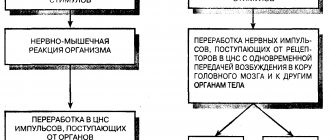Often as a child, we heard similar phrases from our parents: “You won’t sit at the computer until you do your homework,” “You won’t get candy until you eat porridge,” “If you don’t clean your room, you won’t go for a walk.” And, as a rule, parents achieved what they demanded from their children, and this happened due to the fact that they influenced their strong desires, directly indicating that they might not get what they wanted. This technique is one of the aspects of negative motivation.
The word “motivation” comes from the Latin motivus – “moving”, and means influencing a person in certain ways with the aim of inducing some action. Motivation is often used to improve the performance of organizational employees, athletes, scientists, models, etc. Nowadays you can often hear about a person’s internal, personal motivation, when we try to be more productive and achieve greater results.
Why should you use motivation at all? The natural traits of every person are the desire to stay in the comfort zone, laziness, and partly procrastination, and all this, as we know, does not help us reach new heights, be successful and self-sufficient. Therefore, first of all, we have to fight these traits ourselves, and if there is not enough will, there is a need for outside help. And here it is important to understand how you are influenced (by others or ourselves).
There are two options for developing a motivational strategy:
- either we receive something good for fulfilling this or that task;
- or we are threatened by the possibility of doing something bad due to failure to fulfill the order.
Let's take a closer look at the second option, which is called “negative motivation.”
What is motivation: description
There is no clear definition of motivation. It is a set of external and internal motives that encourage an individual to act in one way or another.
The basis of motivation is the desire to carry out any action. It reflects the needs, interests and aspirations of a person, so motivation is always individual.
The main component of motivation is the presence of a motive. This is the standard (imaginary or real) that an individual strives to achieve.
A common misconception about motivation
One of the most surprising properties of motivation is that it often occurs after taking new actions, rather than preceding them.
People have a common misconception that motivation comes from passively watching a motivational video or reading an inspiring book. However, active inspiration is a much stronger motivator.
Most often, motivation becomes the result of an action, not its cause. The first step in a new business is a form of active inspiration that gives impetus to further action.
Objects in motion tend to stay in motion. Objects at rest tend to remain at rest. Newton's first law
This way, once you have pushed yourself away from the state of inaction, it is much easier for you to continue moving forward.
Almost all the difficulties in solving any problem are found at the very beginning. But once you've started, progress comes more naturally.
In other words, it is often easier to complete a task than to start it. Therefore, one of the keys to motivation is to simplify the initial stage.
There is no beginning and no end. Only action. Quote from the film “Peaceful Warrior”, 2006
How motivation works: moving towards a goal
The main motivators that push a person to action are the desire to achieve something and the fear of losing something. The first includes all activities aimed at various achievements (purchase, search, victory), and the second includes the desire to avoid losses (time, finances, opportunities).
All others are derivatives of these 2 factors. A person commits all his actions because of one of these incentives.
For one person, going to the gym with a lot of people is a positive aspect, because there is an opportunity for communication, but for another, it is a negative aspect, because a large crowd of people makes him feel uncomfortable.
Let's sum it up
It should be remembered that both external factors and the internal mood of the person himself can encourage action. For each person, motivation is individual, so his essence itself determines the source of motivation. Please note that an indecisive person needs an external stimulus, while an ambitious person is helped by his internal potential.
Don’t forget to subscribe to our telegram channel, where there is still a lot of interesting information on motivation, investments, making money on the Internet and investing money wisely.
Types of motivation in psychology
In psychology, there are the following types (types) of motivation:
- internal and external;
- positive and negative;
- stable and unstable.
These are the main types of motivational formations.
There is also active (diversive) and passive motivation. The first includes internal stimulation, the second - external.
External and internal motivation
They are also called extrinsic and intrinsic. External (extreme) is based on the influence of external factors: conditions and circumstances that do not relate to individual types of activity. Often the motivation for doing something is the positive example of another person. This is called a functional motive.
Internal (intrinsic) motivation has internal reasons emanating from life values: goals, needs, desires, etc.
Each of them has its own characteristics:
- External motivation is aimed at quantity, and internal motivation is aimed at the quality of work performed.
- When the external task is achieved, it ceases to motivate, and the internal one becomes even more active.
- Intense motivation is a stronger incentive than extrinsic motivation.
- As you gain self-confidence, intrinsic motivation increases.
Positive and negative
The main forms of incentives can be divided into negative and positive. Positive ones push to action when a person is in anticipation of benefit. This encourages you to perform your duties more efficiently and meet deadlines. Such motivation plays an important role in achieving high results and increases work efficiency. Motivation in a work team can be not only material reward, but also psychological methods of influence.
There are the following principles that confirm the effectiveness of positive stimulation:
- increasing the importance of the individual, leading to improved quality of work;
- increased motivation to take further actions after receiving benefits or moral encouragement;
- confidence in your actions and rapid achievement of success.
Negative motivation involves various punishments for failure to complete a task or poorly done work. According to research, long-term negative motivation leads to loss of interest in the duties performed, cultivates a feeling of fear, reluctance to act, reduces self-esteem and contributes to the development of complexes.
Accordingly, positive motivation stimulates action, and negative motivation strengthens discipline during the performance of an activity. The latter is not capable of revealing internal potential; its main task is to keep the individual within the established framework.
Negative motivation loses its power if it is not used in combination with positive one.
Stable and unstable
Sustainable motivation includes the daily needs of people:
- hunger;
- thirsty;
- dream;
- sex;
- communication;
- acquiring new knowledge.
A person consciously carries out activities without putting much effort into it.
Unsustainable motivation is weaker. It must be constantly supported by external factors.
Additional classification of motivation
The classification of motives is quite broad. According to psychological and sociological research, there are additional motivational types (incentives) - the basis of motivation:
- Self-affirmation is the desire for recognition in one’s environment. It ensures personal development and awakens self-esteem.
- Identification is the desire to be like one’s idol, the desire to match his set of qualities.
- Power is the need to influence the activities of others, the desire to dominate and exercise control over people.
- Procedural-substantive – the need for active activity, receiving pleasure directly from the process.
- Self-development is a person’s desire to develop and improve. It is associated with self-affirmation.
- Achievements – the desire to achieve better results, to become a leader in your field.
- A prosocial motive is a sense of duty to society, the manifestation in the process of achieving a goal of such qualities as responsibility, self-confidence, tolerance, etc.
- Affiliation - association: the desire to make contact, find new connections, maintain friendly relations with other people.
Each type is divided into several levels, which depend on individual conditions:
- the significance of achieving the goal;
- confidence in its achievement;
- individual perception of the result of their activities.
At different times, people's values, motives and capabilities differ significantly.
Negative motivation: examples
History contains a considerable number of examples when methods of negative motivation were tried in various experiments. However, some of them were more successful, and some were less successful. But in any case, as a result of empirical observations, scientists and specialists in the field of psychology came to conclusions. Let's look at some of these experiments.
It is known that when running incorrectly, the knees are significantly injured, and in order to prevent damage to health, you must try to land on your toes and avoid contact of your heels with the surface. Especially for this purpose, a model of sneakers with an electrical stimulator was invented, which gave a slight electric shock every time the heel hit the ground, which became a serious impetus for proper running technique. Naturally, a person tries in every possible way to avoid pain associated with the supply of current, so the introduction of an electrical muscle stimulation device into sneakers has borne fruit.
A not-so-successful example of the use of negative motivation is an experiment conducted to “cure” gay men. In order for men to get rid of homosexual desire, they had to look at the screen and watch the pictures. Moreover, if the picture showed a male body, a small electrical discharge was applied to the men’s body, which was painful. Accordingly, later, when the subjects saw male bodies, they developed disgust and painful associations, that is, one could say that the experiment was to some extent a success. However, the unpleasant side of this experimental case was that the people who participated in the experiments no longer wanted to live, and many of them committed suicide.
Another example is the installation of air conditioners in California, USA, when owners of houses and apartments were offered an additional service in the form of thermal insulation. At the same time, one part of the clients was offered the phrase “Thanks to thermal insulation, you can save $400 per month” (numbers are arbitrary), and the other - “Without thermal insulation, you will lose $400 per month.” From these formulations it is clear that the first is an example of positive motivation, and the second is negative. According to the results of the experiment, it turned out that customers who heard the second phrase responded to the offer twice as often.
These examples show that methods of negative motivation are still associated with negative feelings and emotions, and they seriously affect the psychological state of the individual. We should not forget that when using methods of negative motivation, we risk encountering a weak psyche or an unstable psychological state, so it is important to understand who we are dealing with. In this regard, psychologist Elena Alexandrova identifies several factors that must be taken into account when using negative motivation techniques:
- intellectual level of the individual (the more educated a person is, the less negative motivation methods influence him; it is in this case that positive motivation methods are more effective - bonuses, incentives, praise, bonuses, etc. - due to a more philosophical outlook on life and less susceptibility to fear);
- age (young people are full of energy and strength, ambitions and goals, therefore methods of negative motivation are less effective on them than on adults, since at 45 years of age and older it is already more difficult for a person to find a job, it is more difficult to change their usual way of life and generally go for some changes);
- family status (family involves a large amount of responsibility, when we care not only about ourselves, but also about the well-being of our loved ones, and, therefore, the levers of motivational influence will be perceived more sensitively due to the fear of deprivation of stability and reliability).
Also remember that anyone can become a victim of negative motivation, so it is important to firmly respond to blame, guilt or fear. By the way, you can learn how to maintain mental stability in all situations by signing up for our online program “Mental Self-Regulation”. In just 6 weeks, this program will provide you with various techniques and exercises that will allow you to cope with stress, anxiety and fear in the future, maintain composure and self-control. And interesting cases and examples will allow, in addition to theoretical knowledge, to gain real effective skills.
Content theories of motivation
Sociology and management often use substantive theories of motivation. Such concepts are based on the study of human needs, since they are considered fundamental factors in the formation of motivation.
Maslow's hierarchy of needs theory
This theory states that the satisfaction of all needs has a clear sequence: first, the needs of the lower level are satisfied, and then the higher ones.
Schematically they are depicted in the form of a pyramid consisting of 5 levels:
- Physiological needs (food, water, air, sleep, etc.).
- Security (stability, security).
- Social needs (communication, love, friendship).
- Prestige (career, authority).
- Spiritual needs (knowledge, skills, art, self-development and personal growth).
Alderfer's ERG theory
Based on Alderfer's theory, people have 3 main needs:
- Existential (physical needs, safety).
- Establishing contacts (communication, belonging to a group).
- Self-realization (career growth, creativity).
According to this theory, movement from 1 level to the next can occur both from bottom to top and from top to bottom.
McClelland's theory of acquired needs
In this theory, needs are reduced only to high levels:
- The need for belonging.
- The desire for power.
- Self-realization.
Herzberg's two factor theory
Herzberg's theory provides for the presence of 2 factors that influence employee motivation:
- Hygienic (retention) - conditions and nature of work, wages, relationships with colleagues and management.
- Motivational (stimulating) - recognition, self-realization, climbing the career ladder.
How to motivate yourself
Be miserable. Or motivate yourself. Everything you do is your own choice. Wayne Dyer
Just get started and let your motivation catch up with you.
You don't have to wait for motivation to get started. If you want to work consistently, every day, then all you need to do is take the first step.
After some time, everything becomes easier and more interesting, and motivation will catch up with you.
Start small
If a project or goals are too big or difficult to achieve, don't let those circumstances hold you back.
Instead of casting negative connotations on your thoughts, break your tasks down into sub-goals and then focus on the next one and start moving forward.
Reduce daily distractions
When you are surrounded by distractions, it becomes difficult to concentrate.
So close your office door, put your phone on silent, and stop checking social media.
Get motivation from the people around you
Spend less time with negative people who always see the negative side of things in everything, filter what you tell them about or completely eliminate communication with them.
Pay more attention to a positive, successful environment, the energy of which will transfer to you and charge you for new achievements.
Get motivation from people you don't know
Don't limit yourself to the motivation you can only get from people close to you.
There are a large number of motivational books, videos, and other people's success stories that you can use to motivate yourself.
Listen to music that gives you energy
One of the simplest things that can help you motivate yourself when you feel low on energy or motivation is to listen to music that can inspire you.
So create a music playlist that can energize you.
Taking a break from work by listening to motivational music will have a positive impact on your progress.
Look for opportunities in negative events
A pessimistic attitude can drain your energy and motivation. On the other hand, having a positive and constructive way of looking at a situation can be a great way to motivate yourself.
So when you encounter a negative event, ask yourself: “What's good about it?” and “What hidden opportunity is there?”
Then take the lessons learned and take steps to improve what you do.
Be kind to yourself when making mistakes
It's easy to fall into the trap of self-blame and self-hatred when you stumble or fail.
But this attitude is a conduit of negative energy, killing motivation and lowering your self-esteem.
So be kind to your beautiful self and if you fail, push yourself to get back on your path by taking another step forward.
Look back and evaluate the results
Instead of killing your motivation by comparing yourself to those ahead, look back.
There may still be a long way ahead of you, but so much has already been accomplished.
Friendly competition
As a rule, an element of competition enlivens the situation. Therefore, find yourself an opponent and come up with a friendly competition with a colleague, classmate, or other person engaged in the same activity.
For additional motivation, you can define a prize, for example, the winner receives a portion of ice cream or a bottle of whiskey.
Remind yourself why you are doing this
When you don't know how to motivate yourself, it's easy to lose sight of why you're doing it, why you started it all.
Therefore, take 2 minutes of free time and write down the 3 main reasons for taking your actions, getting an education, completing a project, saving money, etc., then post this entry in a visible place or save it on your smartphone.
Think about what you might be missing
You can motivate yourself to keep moving towards your goal by considering the negative consequences of stopping your actions. What you might end up missing out on.
Ask yourself: What might the results be if I continue doing this for another year? And within 5 years?
Be grateful for what you have
When your motivation level leaves much to be desired, it’s easy to start viewing your life in gloomy terms.
To recharge yourself with positivity and focus on what you have and who you are, ask yourself, “What are 3 things in my life that I take for granted but can be grateful for?”
Clean up your workplace
Having an uncluttered and minimalist workspace helps you think more clearly.
You'll feel more focused and ready to tackle the next challenge.
Reduce your to-do list to one task
An overcrowded to-do list can be a real motivation killer, so try reducing your current task list to just one.
Choose the most important one or the task that you have been putting off for too long, and then move on to completing it.
You will be surprised how soon all the tasks will be completed.
Don't forget about breaks
If you want to better understand how to motivate yourself, stop working nonstop.
Instead, work for 45 minutes every hour and use your rest breaks to grab a snack, get some fresh air, or stretch.
Target Calibration
If the size of a goal intimidates you, set a smaller goal to regain your motivation.
If a small goal doesn't feel inspiring, set the bar higher and see how it affects your motivation.
Physical exercise
Exercise has a positive effect on more than just your body.
20-30 minutes of physical exercise will reduce internal tension and allow you to concentrate again.
Celebrate your achievements
If you anticipate the reward that you will receive after achieving a goal, your motivation tends to increase.
No matter how big or small your current successes are, celebrate your results or give yourself a gift.
Be aware before you start
Studying other people's accomplishments in your field of interest will help you avoid pitfalls and create a realistic timeline for achieving your goals.
Otherwise, you may become demotivated if you don't progress as quickly as you originally thought.
Take a Meditation Break
When your mind is a little tired or very tired, your energy and motivation become depleted.
Therefore, in the afternoon, or whenever you consider it necessary, you can do meditation. Simply close your eyes and focus on your breathing for a period of time that is comfortable for you.
Meditation clears the mind and reduces internal stress.
Go for a walk
A walk in the fresh air is a great way to motivate yourself, as well as refresh your head and stretch your body.
Process theories of motivation
They are designed to analyze how efforts are distributed to achieve a goal, and what style of behavior is chosen. An important factor is the conditions for satisfying needs: good pay and high evaluation of work.
Vroom's expectancy theory
According to the theory of expectations, to stimulate a person to activity, one need is not enough. You need to be confident that they will lead to the desired result.
Conditions influencing motivation:
- Waiting for the desired result.
- Reward for results.
- Reward value.
Motivation increases in direct proportion to the increase in each of these factors.
In the absence of even 1 of them, motivation will disappear.
Adams' theory of equality of justice
The theory of justice states that a person independently evaluates the relationship between the efforts made and the reward received, and compares his work with similar ones. Making such a comparison can lead to feelings of injustice.
There are 6 reactions to injustice:
- reduction of effort;
- desire to increase remuneration;
- decreased self-esteem;
- an attempt to influence the workload and salary level of other employees;
- finding another comparison object;
- desire to change position or place of work.
Porter Lawler model
This theory is based on the fact that people’s motivation is influenced by many factors, including:
- effort expended;
- final result;
- remuneration;
- perception of reward;
- degree of satisfaction.
According to this theory, putting in more effort leads to employee satisfaction with the final result.
E. Locke's theory of goal setting
Locke's assumption is that goal setting is a cognitive process that has practical benefits. According to the theory, personal conscious intentions and goals determine human behavior. This behavior continues until this goal is achieved. Intention is a fundamental factor in goal setting. The author of the theory uses the term conscious goals and intentions to show that high goals lead to higher levels of performance.
The concept of participatory management
This concept proclaims the need to involve employees in the management of the company to stimulate them. There are 3 levels of participation:
- Development of proposals.
- Creating an alternative.
- Decision-making.
This concept can only be implemented in companies with hardworking and creative staff.
The problem of the struggle of motives
As already mentioned, a person is simultaneously controlled by several motives, often prompting him to different actions. For example, a classic situation. It’s early morning, the alarm clock rings, which you set specifically to get up early and go for a morning run. But that was yesterday, and now I really don’t want to get out from under the warm blanket when I can sleep for another half hour. What will you choose, which motive will win? This depends on many factors, including the importance of motives, willpower, common sense and additional incentives. For example, if you agreed to run with a friend, and he will wait for you.
In the example given, the situation is not so critical, but it happens that a person is faced with a very difficult choice: to save himself or to save other people, to commit a crime and achieve a goal, or not to commit and give up what he wants. The struggle of motives can become a source of very complex and severe internal conflict, leading to the development of neurosis or depression.
Psychologists in a situation of conflict of motives advise relying on the rational sphere, that is, not giving in to emotions, thinking over the arguments for and against, assessing the pros and cons of one or another course of action. And most importantly, focus on the most socially significant motives. After all, having achieved your goal, but lost the trust and respect of society, you will lose more than you gain.
Despite the fact that we are not aware of all motives, it is possible to control the motivational sphere. To do this, you should learn to build a hierarchy of motives, focusing on the most important and significant ones. The hierarchy of motives is associated with social values and the priorities that exist in our lives.
Theories based on a specific picture of a person
There are 2 concepts based on a specific picture of a person: “Theory X and Y” by McGregor and “Theory Z” by Ouchi. They describe the types of work motivation.
McGregor's XY theory
These are 2 theories in which the author compares the employee’s incentives and the behavior of the company’s management from 2 sides.
Theory X states that:
- people are naturally lazy and use every opportunity to procrastinate;
- a person seeks to escape responsibility, so he becomes an employee;
- he adheres to principles such as stability and security;
- sheds ambition as ballast;
- complete control, pressure and the threat of punishment push a person to work with greater efficiency.
According to Theory Y:
- work is an integral part of human life;
- good working conditions contribute to the development of responsibility and control over one’s actions;
- creative and intellectual potential is not fully used;
- Having achieved the goal, the person receives encouragement.
These are 2 diametrically opposed theories that have the right to life.
Ouchi's Z Theory
In addition to the previous 2 theories, American professor William Ouchi developed Theory Z. It is based on collective principles of motivation, according to which the incentives of employees should be influenced by the company’s values:
- coincidence of the goals of the employee and the enterprise;
- proper organization of work;
- dedication to the team and common goals;
- solidarity;
- confidence.
Positive aspects of this theory:
- The vector of attention is aimed at motivating all employees.
- The presence of managers in the company, their positive communication with subordinates.
- Organization of on-the-job training.
- Providing growth opportunities.
Disadvantages of the theory:
- Excessive requirements for applicants.
- Compliance with established principles, patriarchy.
- Slow promotion.
Methods of motivation in practice
There are many ways to motivate, and they all differ from one another.
Staff motivation
Social motivation is a system of moral, material and professional incentives for an employee.
It aims to increase employee activity and productivity. The measures used for this may depend on various conditions:
- incentive systems at the enterprise;
- features of enterprise management;
- areas of its activity;
- number of personnel;
- management style, etc.
Motivation methods are divided into 3 groups:
- economic (material);
- organizational and administrative (following regulations);
- socio-psychological (following social interests).
The most effective is the carrot and stick method, which is practiced by many enterprises.
Student motivation
It is also important for students and schoolchildren, as it contributes to good learning. It allows you to set long-term goals, choose a behavioral strategy, and achieve high results.
Motivation in children and adolescents rarely arises spontaneously. In this regard, psychologists and educators have developed various techniques to induce motivation. They provide an opportunity to develop safely, learn and experience new things. These techniques include:
- attracting attention (interesting experiences and facts, comparisons, life stories);
- experiencing emotions when presenting materials due to their scale and value;
- making comparisons between scientific research and life experience;
- creating an atmosphere of scientific discussion, educational discussion;
- joyful experience of achievements;
- giving information the effect of novelty;
- equating educational materials to the category of achievements, their updating;
- application of positive and negative motivation;
- formation of social motives (the desire to acquire an authoritative opinion, to contribute to development).
Myths about motivation
Write down your goals and success is guaranteed
On the Internet, you can often come across a story according to which one study was conducted in 1953.
Yale graduates were asked whether they had specific goals that they would like to achieve in the future. Only 3% of respondents answered affirmatively.
Twenty years later, researchers found that these 3% of students with past goals achieved greater financial well-being than the remaining 97%. Isn't this amazing?
And such a development would be a truly impressive fact if it were true, but it is not. In 1997, Fast Company magazine debunked this story, classifying it as a legend.
In fact, even someone like Forrest Mars Jr., the CEO of Mars and also the grandson of its founder, responded in the negative when asked whether he had any job prospects when he graduated from Yale.
I wish it were that simple. However, it should be added that having specific goals is an important aspect of achieving success. The goal itself is necessary, but it alone is not enough.
Just do your best
The “just do your best” mentality is said to be a great motivator. This is wrong.
Undoubtedly, such a belief carries a positive charge, but does not have a significant effect.
Psychologists Edwin Locke and Gary Latham have spent a lot of time studying the differences between the “do your best” goal and its opponent—a difficult goal with a specific plan to achieve it.
Research shows that goals that set the bar high and detail what needs to be done to achieve them lead to much higher performance than simply trying to “do your best.”
This is because more complex but refined tasks force people, often unconsciously, to exert greater effort, increase concentration and stay committed to the goal, persisting longer and better using the most effective strategies.
Just visualize success
Just visualizing success is not only useless, it is also a great way to set yourself up for failure.
Believing that you will succeed and believing that success will come easily are completely different views on the same things.
Realistic people believe they will succeed, but they are also willing to put in whatever effort it takes, persevere, and take the time to plan carefully and choose the right strategies.
They do not shy away from thinking about the obstacles they will face and ways to overcome them.
Unrealistically minded people believe that success will come on its own if they visualize constantly and a lot. But ironically, this approach can only lead to depletion of the internal energy necessary to achieve goals.
People who spend too much time fantasizing about a wonderful future are depriving themselves of the fuel they need to achieve their dreams.
You can develop a more realistically optimistic outlook by combining confidence in your ability to succeed with an objective assessment of the challenges that may come your way.
Don't constantly and exhaustively visualize your success, but visualize the steps you will take to achieve your vision.
Self-motivation
Self-motivation is the use of individual motivational methods based on personal beliefs:
- desires and aspirations;
- focus and consistency;
- determination to act and consistency.
The main indicator of correct self-motivation is the situation when, in the presence of great interference from the outside, a person does not give up and continues to move towards his goal.
The individual performs conscious actions aimed at achieving the desired result.
To motivate yourself, you can use methods such as:
- affirmations - a selection of positive statements that influence the individual’s subconscious and lead to a positive effect;
- self-hypnosis is an influence that has a person’s independent influence on his own psyche, the purpose of which is to create a new behavioral model;
- biographies of successful people are an effective way of stimulation based on studying the life stories of great personalities;
- formation of strong-willed skills - performing actions aimed at overcoming one’s own laziness, fears and reluctance to act;
- Visualization is an effective method that is based on the mental representation and emotional experience of achieved goals.
Self-hypnosis
Self-hypnosis can be effective only if a person has the ability to do so: he can influence his subconscious and psyche, causing the desired reaction and achieving a positive effect.
Biographies of successful people
Using this method is suitable for both children and adults. A person sees the full picture: there was a desire, then action followed, and then the result.
Visualization
Visualization is a powerful method of achieving goals, because thoughts tend to materialize. An important condition for its use is the presence of active actions to achieve goals.
What determines the level of motivation?
Regardless of the incentive that helps a person move forward, the level of motivation is not constant and unchanging.
Depending on the actions performed, accompanying circumstances and other factors, its level can either increase or decrease.
Factors that determine motivation levels:
- the significance of the achieved result;
- faith in its achievement;
- personal forecasts regarding the implementation of the plan;
- own understanding and idea of success.
Individual motivation is always stronger, because it is aimed at achieving clear goals and obtaining measurable results.
How does motivation influence human behavior?
The motivation process includes:
- Assessing life dissatisfaction, identifying needs.
- Formation of goals to satisfy them.
- Developing actions to help achieve the goal.
A powerful psychological phenomenon—motivation—passes through all these stages.
Motivation encourages us to take action and motivates us to act. If we clearly understand what and how we need to do to achieve a goal, motivation occurs in an easy and inspired form. However, if our goals are not supported by a positive feeling, we need to include a motivating stimulus in the motivation process. For example, the desired item or actions of other people, as well as promises made, inevitable circumstances, etc.











